Duffy Fainer is a commercial/instrument pilot with a Grumman Cheetah, based at Montgomery Field San Diego. He’s logged 2000 non commercial hours in 9 years and is a holder of 3 FAI certified world records in skydiving, including the current largest freefall formation of 400 skydivers over Thailand in 2006.
I have five mounts currently stuck
to my Cheetah, located on spots over a rib for the least vibration. They include:
Battery life is short for video,
but longer and sufficient for 60+ minutes of continuous photography.
The Polar Pro neutral density filter ($29) will change the automatic exposure resulting in a slightly slower shutter speed which will blur the prop.
on top of the tail:
By rotating the image in Photoshop and having the horizon actually level, it reveals the actual angle of bank:
below the tail:
Outside on top of windshield gives a clearer result without some glare of shooting through a window, for an unobstructed straight ahead view. The battery can be charged or the camera operated via a usb cable plugged into a charger. You can also purchase a cable that will enable audio recording to the GoPro from your headset plug
I do not recommend or advise you to mount a GoPro or anything on your airplane, as it may result in death or damage for you. This article is the result of my experience and you can freely choose to adapt them to your situation:
Taking your own aerial selfie’s: Do you need a GoPro on your wing:
Having been a skydiver since 1974, getting aerial images has always been desirable.
I first noticed the GoPro on the helmets of skydivers in 2006, and they’ve
become ubiquitous in that sport. As a pilot/Cheetah owner, I saw the potential
and have been experimenting with one for two years. The Contour, Garmin Virb
and others have come along since, but this story is about my GoPro experience on my Grumman Cheetah. Your mounting options for your particular aircraft will differ.
I own the Hero 4 Silver edition, retailing at a fixed January 2015 price of
$399. Add to that a $30. memory card, $10. for additional mounts and a $30
neutral density filter which reduces prop blur and protects the plastic lens
with glass. You get HD video as well as 12 megapixel stills. The stills are
impressively sharp. You can also shoot in video mode with a 5 megapixel still every 5 seconds. This is shot from the wingtip, and is a cropped 12 megapixel file:

I originally mounted the camera using their suction cup mount, which remarkably
stayed connected to the wing and both the top and the bottom of the tail.
The length of that mount is susceptible to vibration, and ultimately I chose
the low profile supplied adhesive mounts, which feature a very tenacious 3M
sticky tape, which they say can be removed with heat from a hair dryer. Here is a picture of the various mounting points.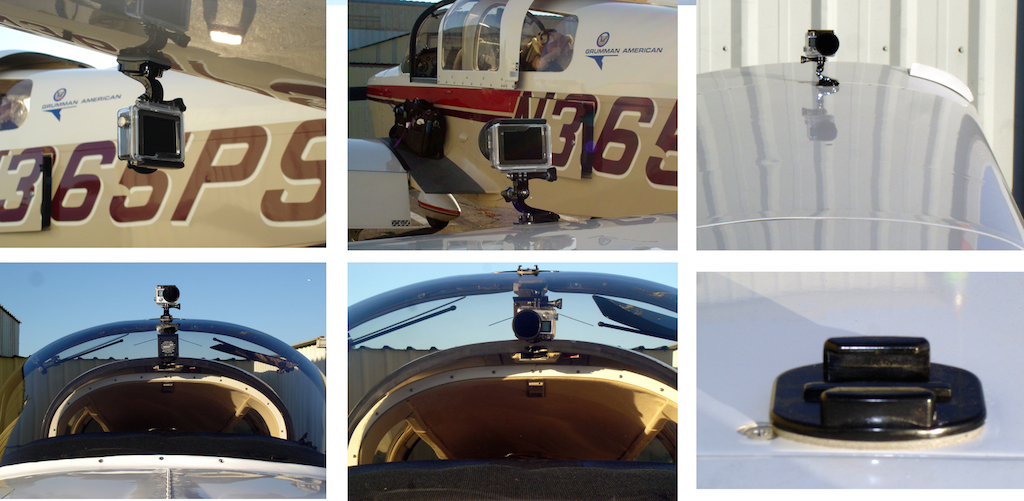
The pilots wingtip for you own personal “hero” shots. Note the
propeller. The extreme fish-eye lens unfavorably distorts the blades. This is why a neutral density filter is desirable.
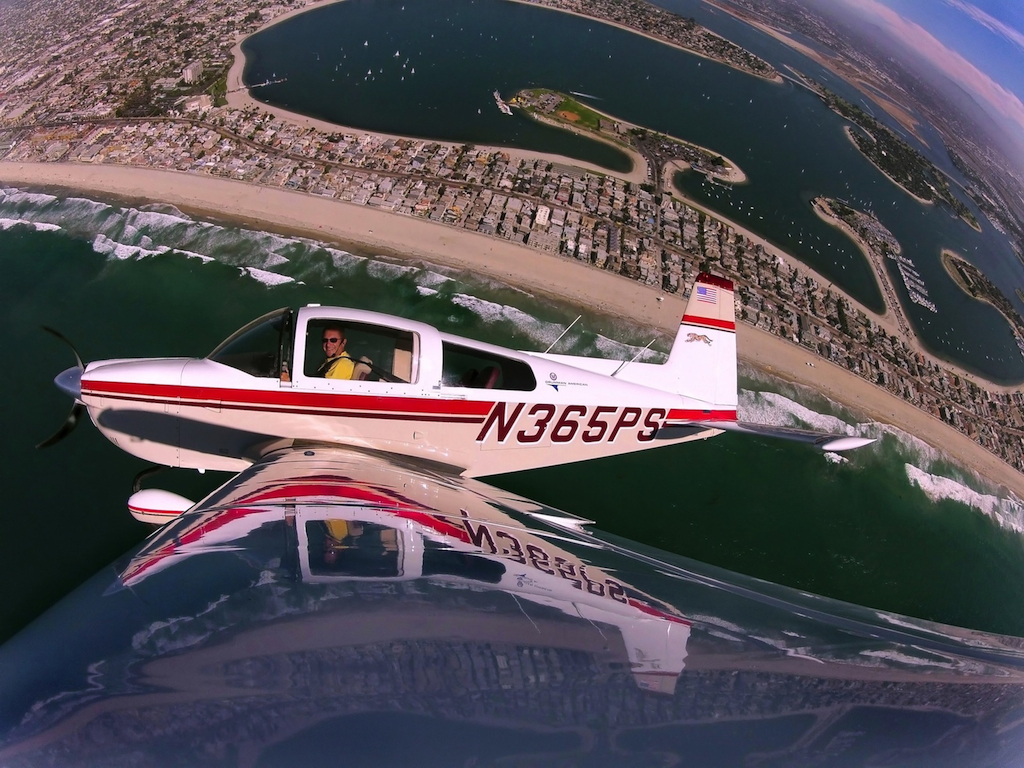
With the early GoPro models you had no preview, so you would mount the camera, manually point it and press “start”.
You’d run to the cockpit, start the plane and go…you had no wireless
control. But now the camera has an LED preview screen and there’s a
WiFi connection to your tablet and smart phone so you can control, preview
and review your shots from the comfort of your left seat. You can also change
settings and switch between video, still, and time-lapse photography.
The mounting hardware is similar to a Fastex fastener, with a clip end and
a receptacle end. But its more brittle than that, and my clips were prone
to breaking. Warranty replacement is provided, but that may not ease your
mind with your camera hanging out in the wind. Just visually ensure that the
clips are engaged, listen for the click, and orient the mount so that the
camera is “being blown” into the mount, rather than out of it.
I use the time lapse photography setting, firing each half second. I’m
cognizant of where the sun is relative to my background and try to setup a
keeper shot. If you’re trying to get a good shot of your passengers,
ensure they’re fully lit, out of shadows and smiling hard at the camera.
Ultimately, learn what level of bank will keep the glare off the windows.
One mount is on he passenger wingtip, so that everybody gets a “memento” shot.
Note the prop with and without the filter.
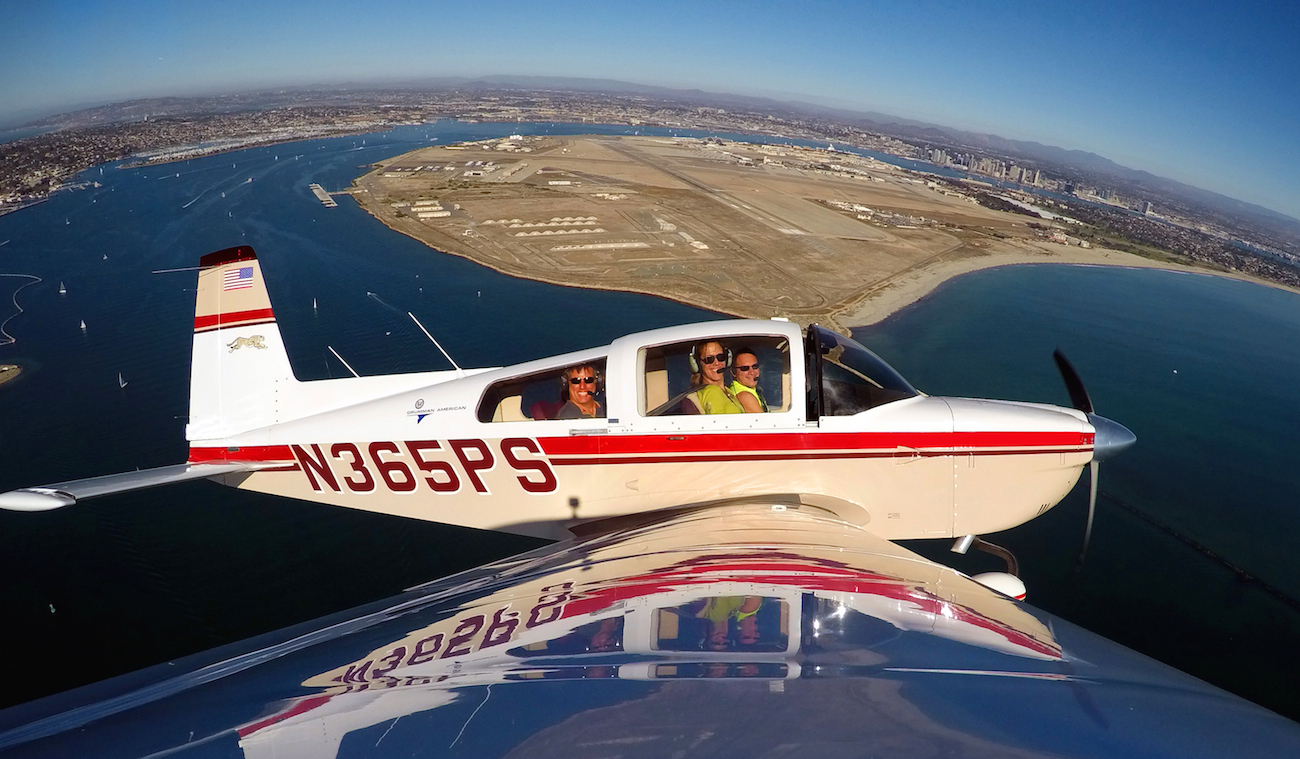

Two more mounts are: on top of the tail, and my favorite is under the tail for a better flying dynamic. It’s a fun
way to get your short approach and landings with the entire plane in the shot,
plus a look ahead and under the plane. Landing videos from this perspective
are more exciting.
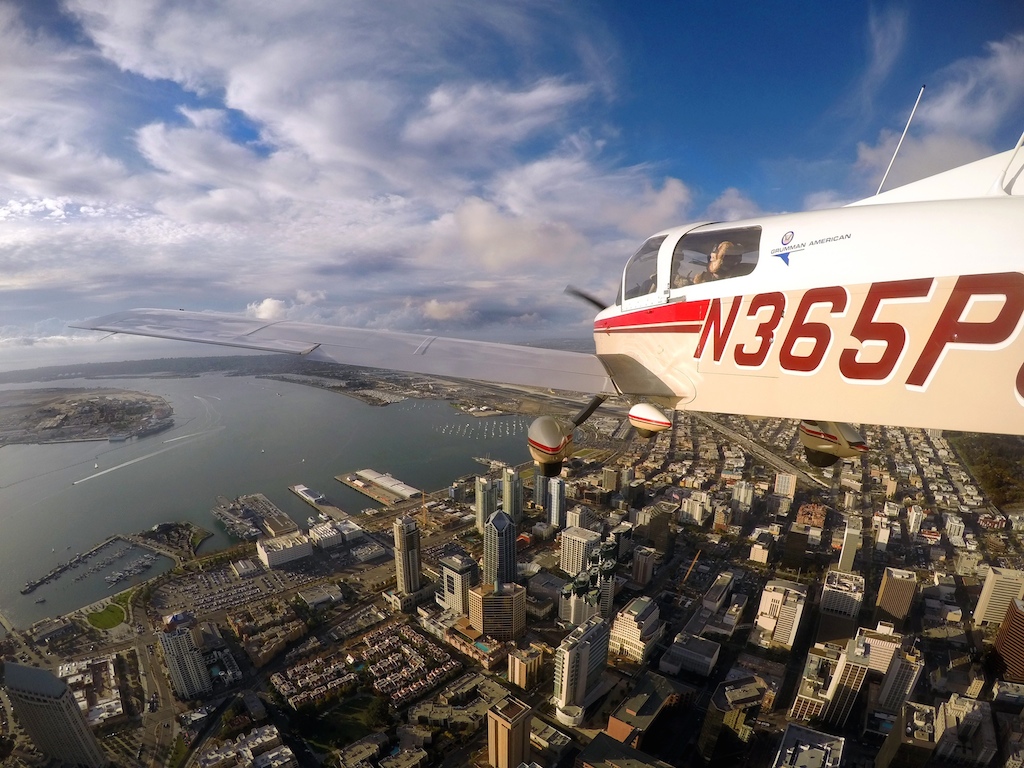
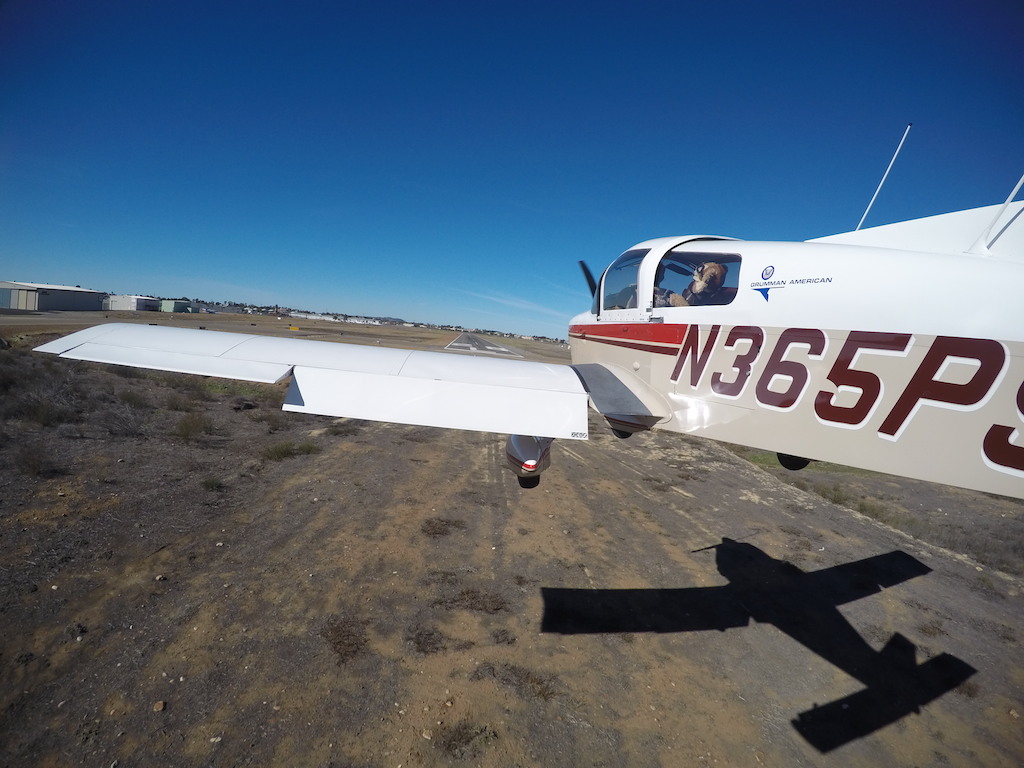
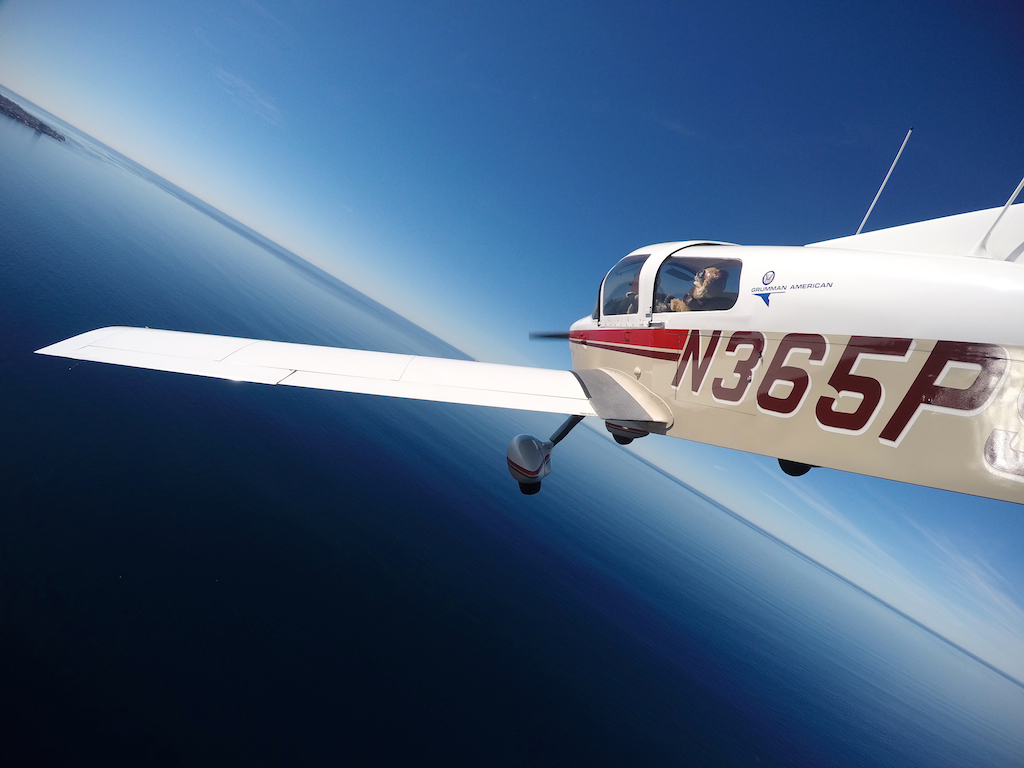
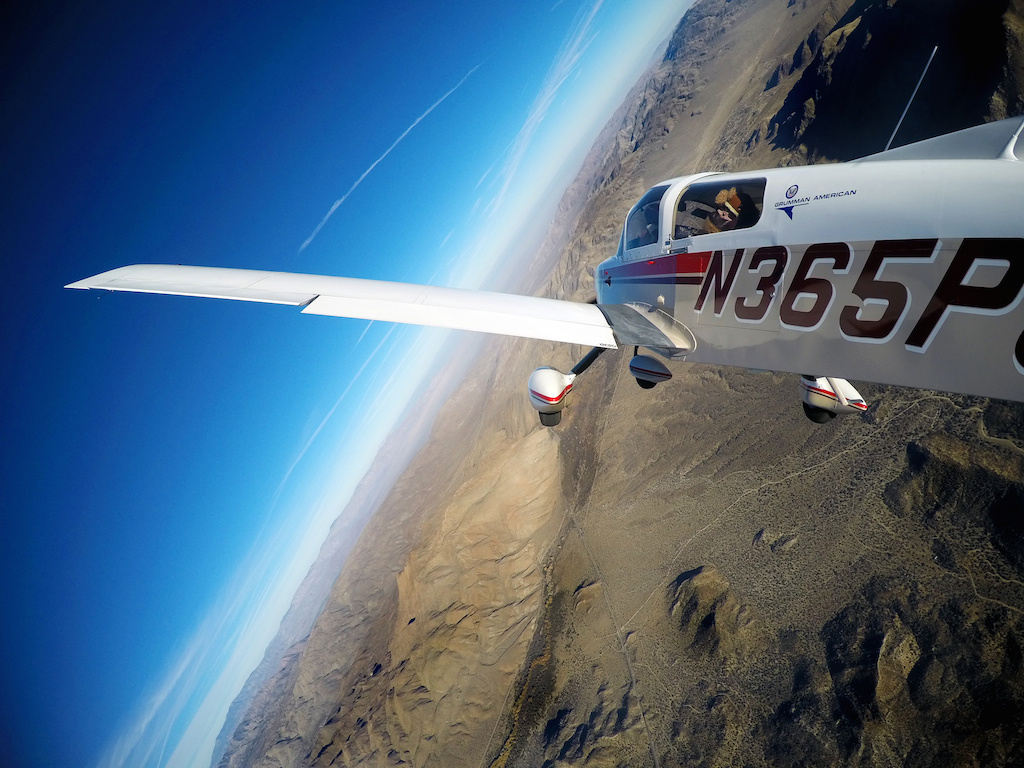
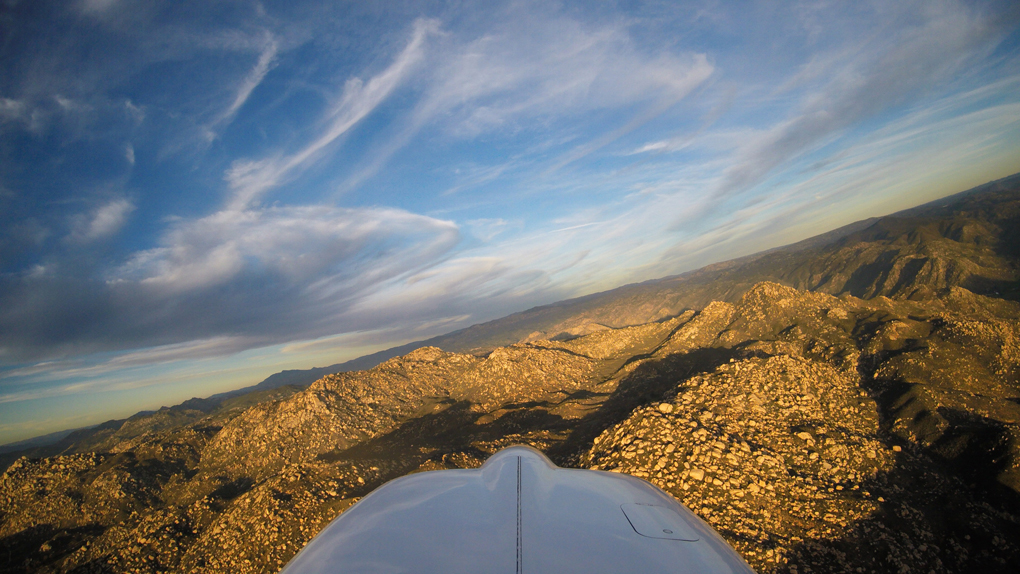
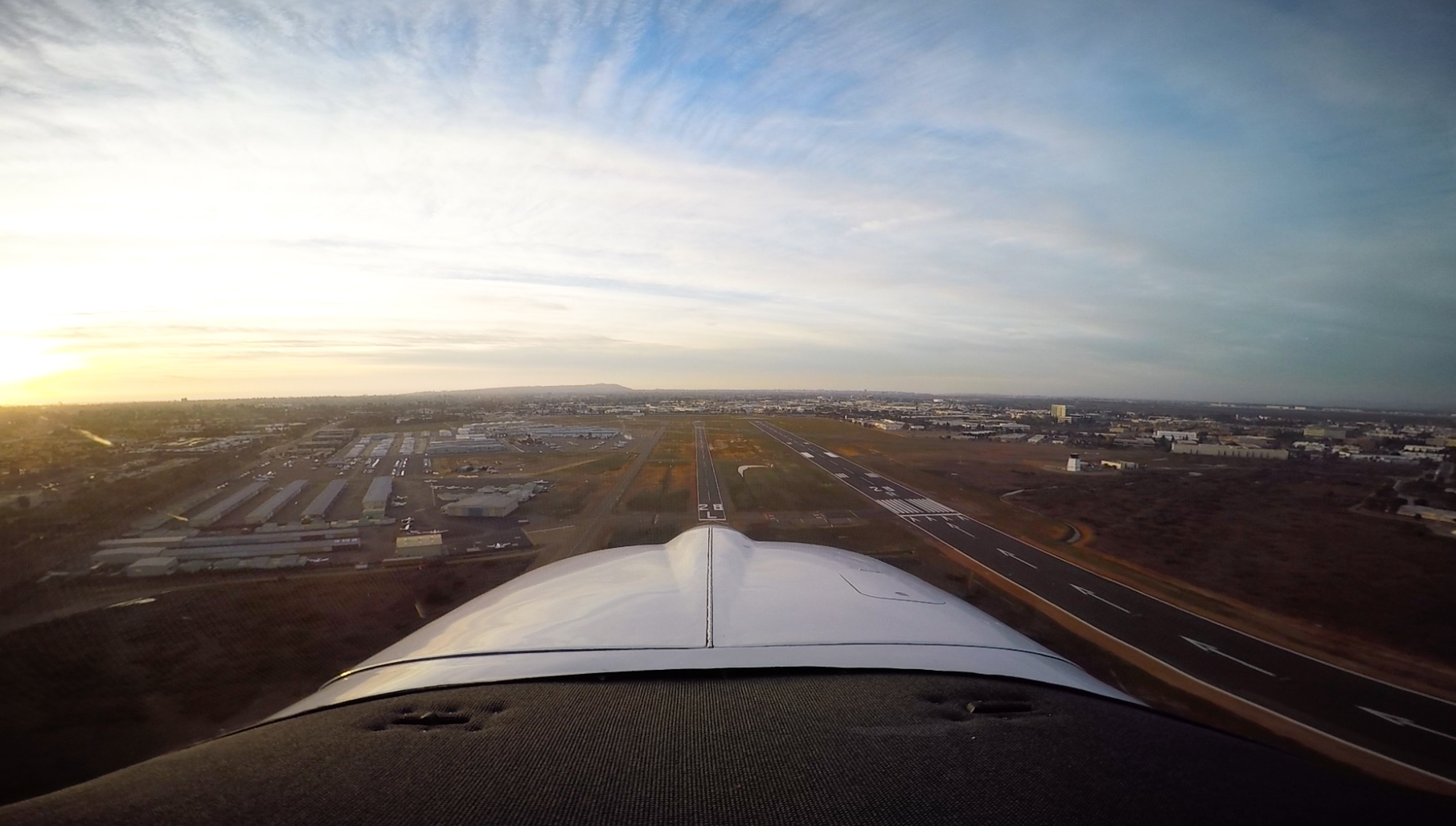
I’ve experimented with night photography, both in long exposures in
night mode, and auto exposures in day mode. You can get some very artistic
and surreal results from manually set long night exposures of 2 to 30 seconds.
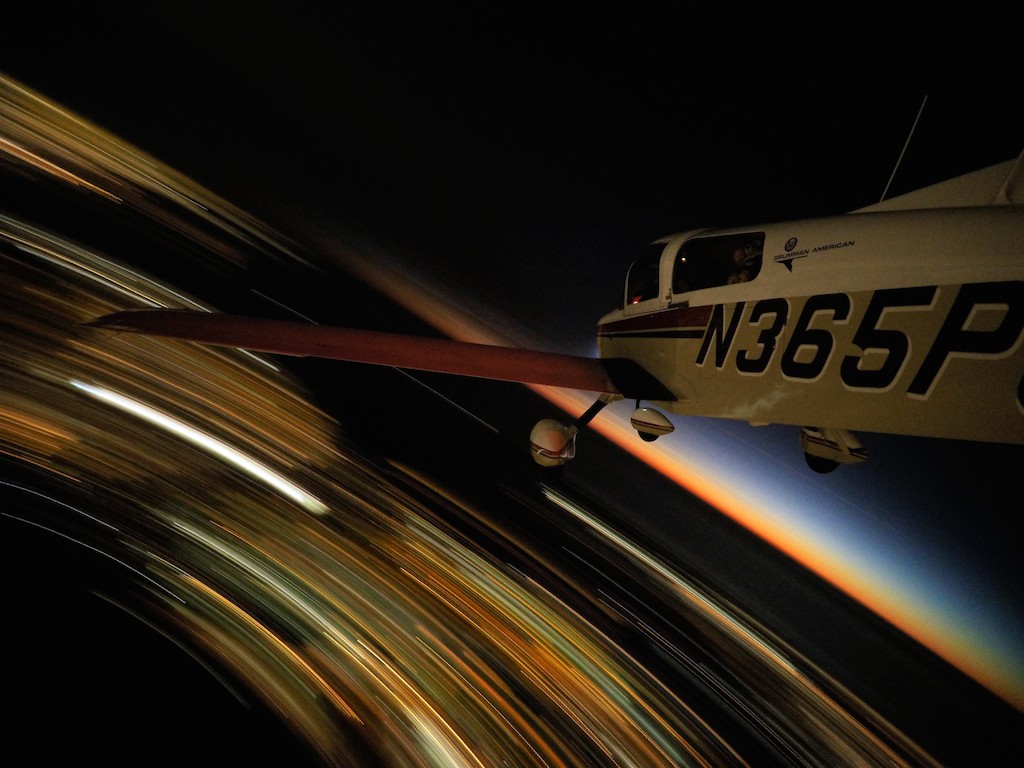
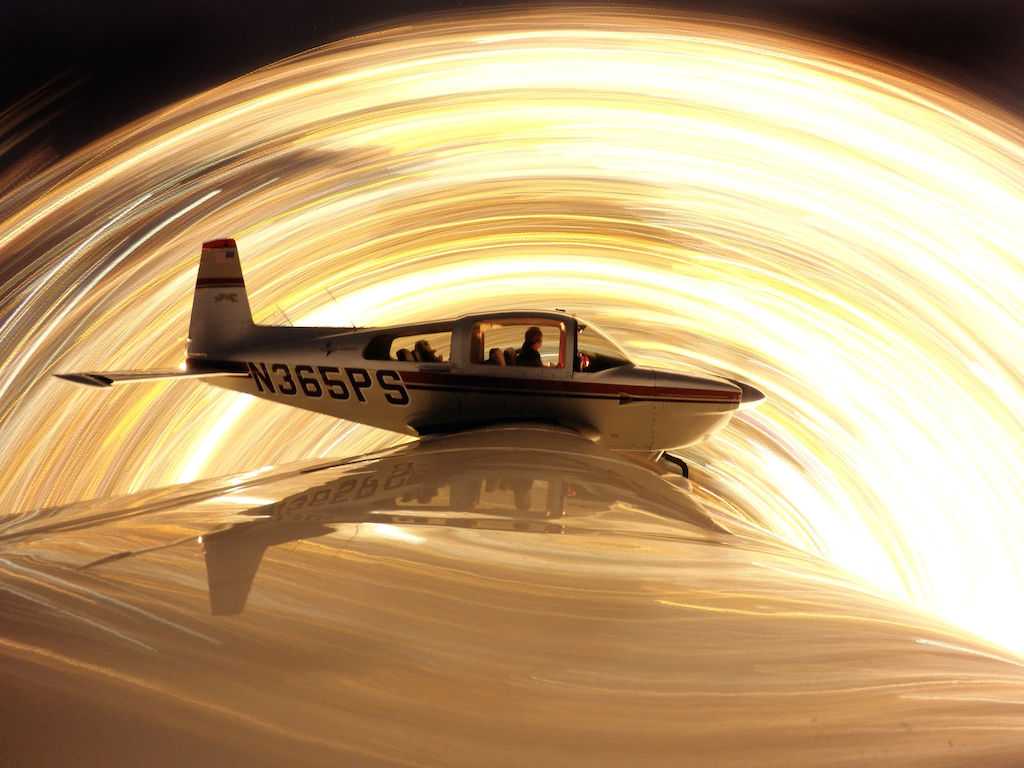
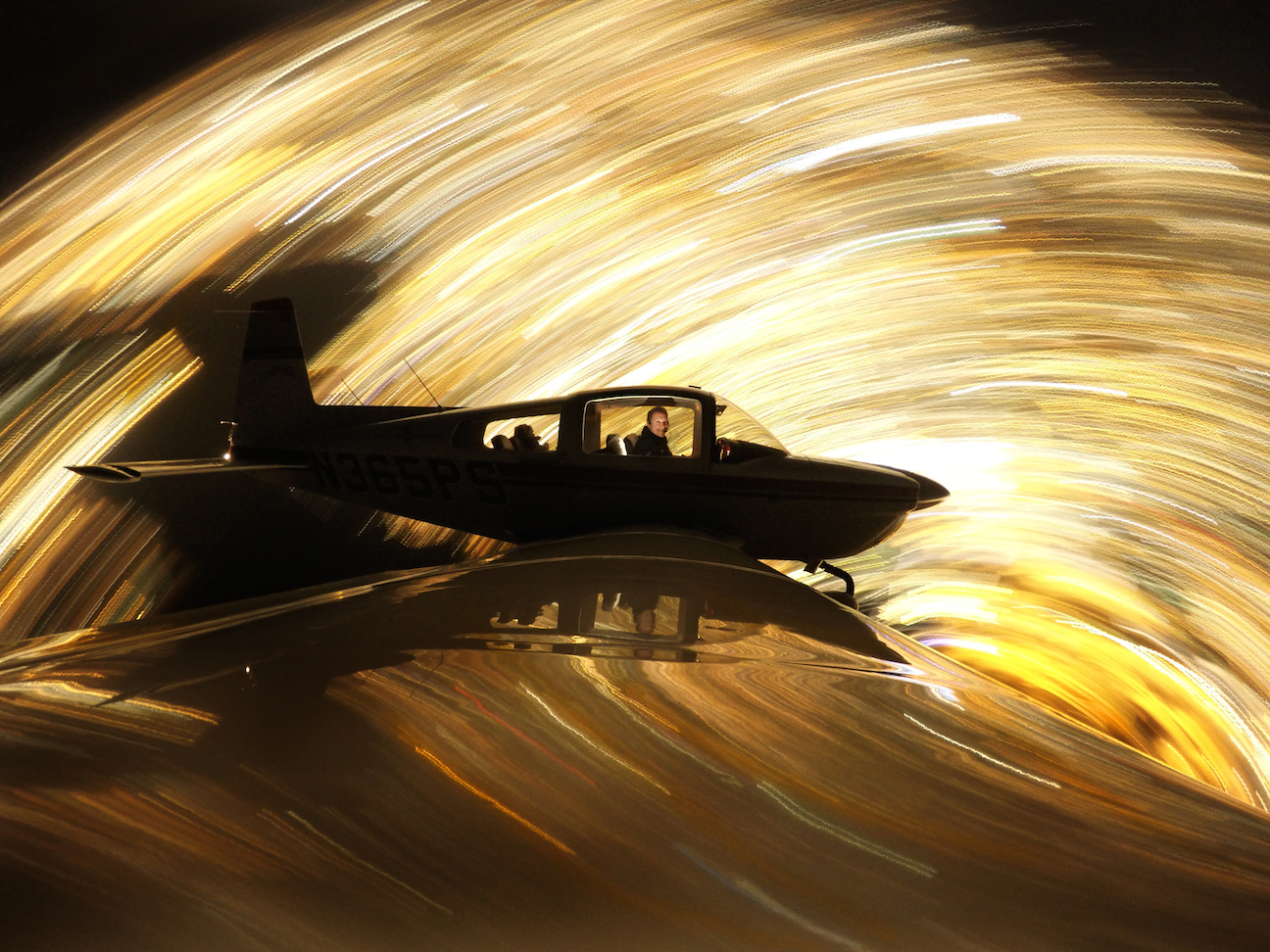
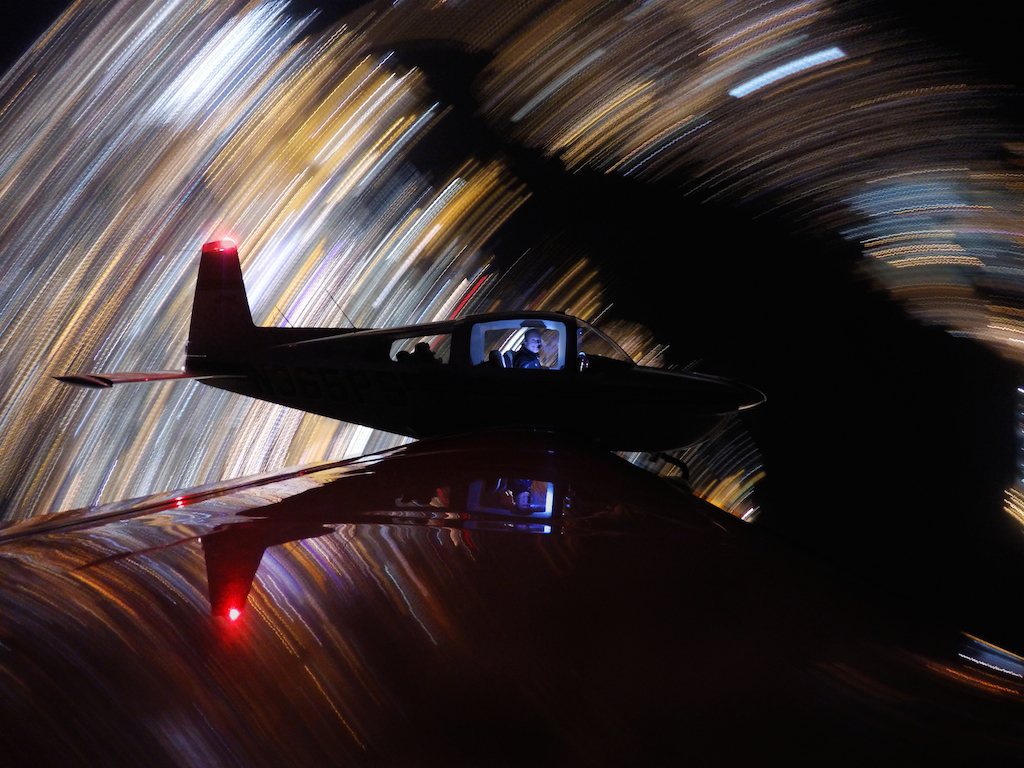
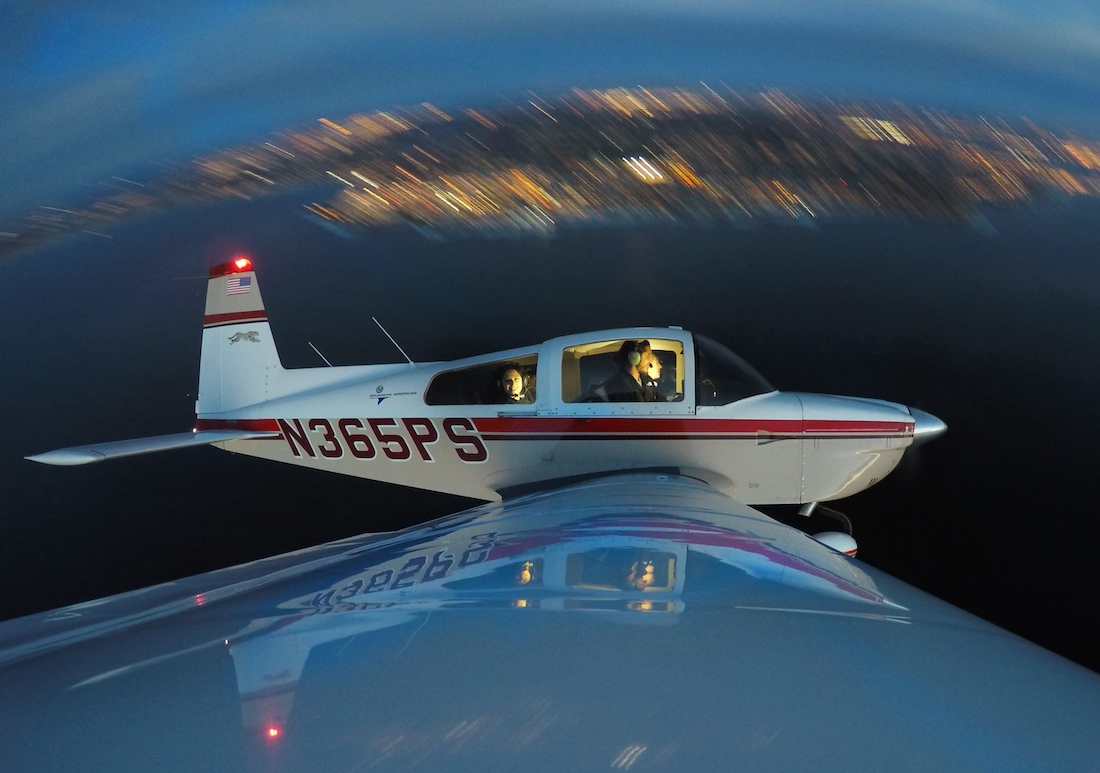
I don’t have any mountings looking back towards me, or from behind looking
past me. Those would be good for instructional videos and perhaps personal
memento videos.
The GoPro lens is extreme fisheye and takes in 150 degrees
of view. Your face looks best when it’s centered, but unflattering if
you’re in the corners.It does take good group shots, and with an exposure every half second, you have time to get everyone set.
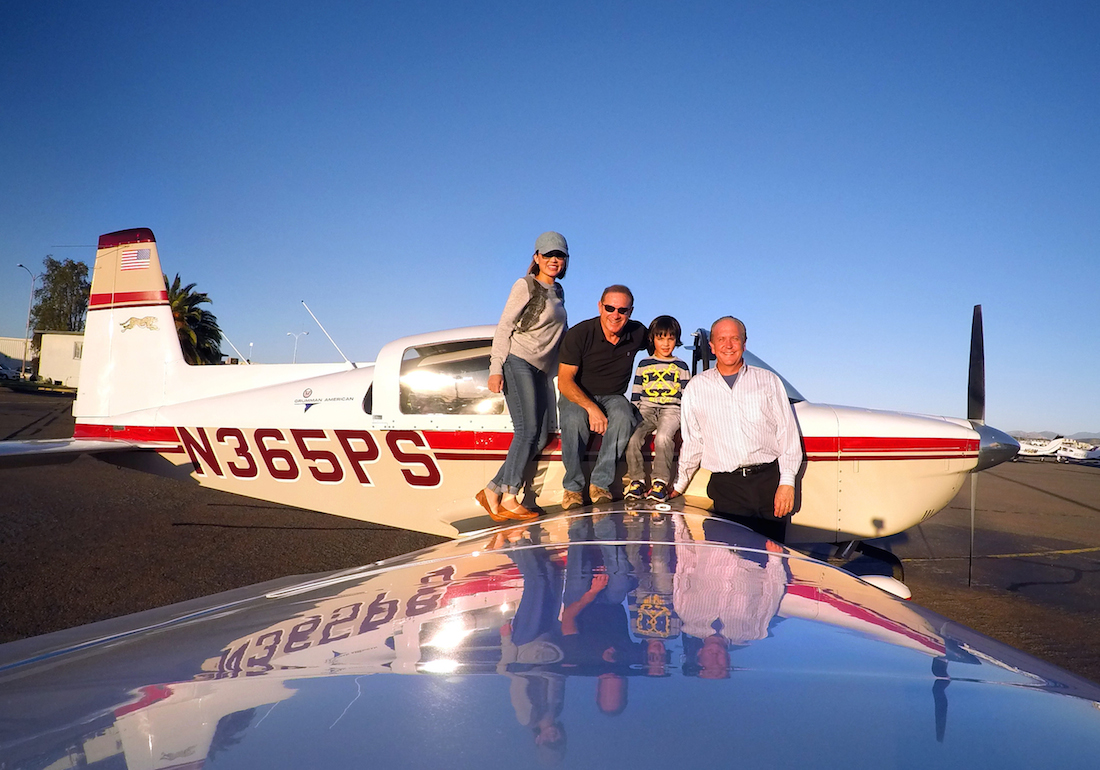
If you don’t feel like ponying up $460 right now, and you’re part
of an EAA chapter or are airplane co-owners, consider a “group camera
ownership”. Just own your own memory card, and share the same camera.
Figure out a rental scheme and it will pay for itself in no time. Maybe you
can nicely ask the others if you can rent it for your next wingsuit mountain
proximity flight or base jump from a bridge.
Now for safety issue and disclaimers.
There’s no guarantee that those
mounts will stick, but in all the years I’ve been around GoPro’s
and skydiving at 120-220mph, I’ve never heard of a mount failing. But
like anything else that’s plastic, exposure and UV will probably affect
it in the long run. However, considering how much abuse the skydiving world
gives it, I’m hoping for a long run.
There has been a lot of debate regarding external mounting of a GoPro, but
according to opinions and concensus, putting one onto a balanced and movable control surface is inarguably both illegal and unsafe. Suggestions submitted to me include trying not to put it where it won't
affect either balance of, or airflow over, any balanced control surface. I am not endorsing any mounting point, but only reporting on my personal results. I did not notice any difference in aircraft handling when I mounted mine under the tail.
Remember
to take care of your flying checklist first instead of obsessing with the
tablet and settings. It’s very easy to forget something, like a mag,
mixture, or flap setting as you’re busy ensuring you’re in the
right video mode and that the camera is running.
So have fun, don’t forget to smile, but more importantly, try not to
have a midair with the other pilot who’s busy either smiling at his
GoPro, or looking at his IPad while reviewing his shot.